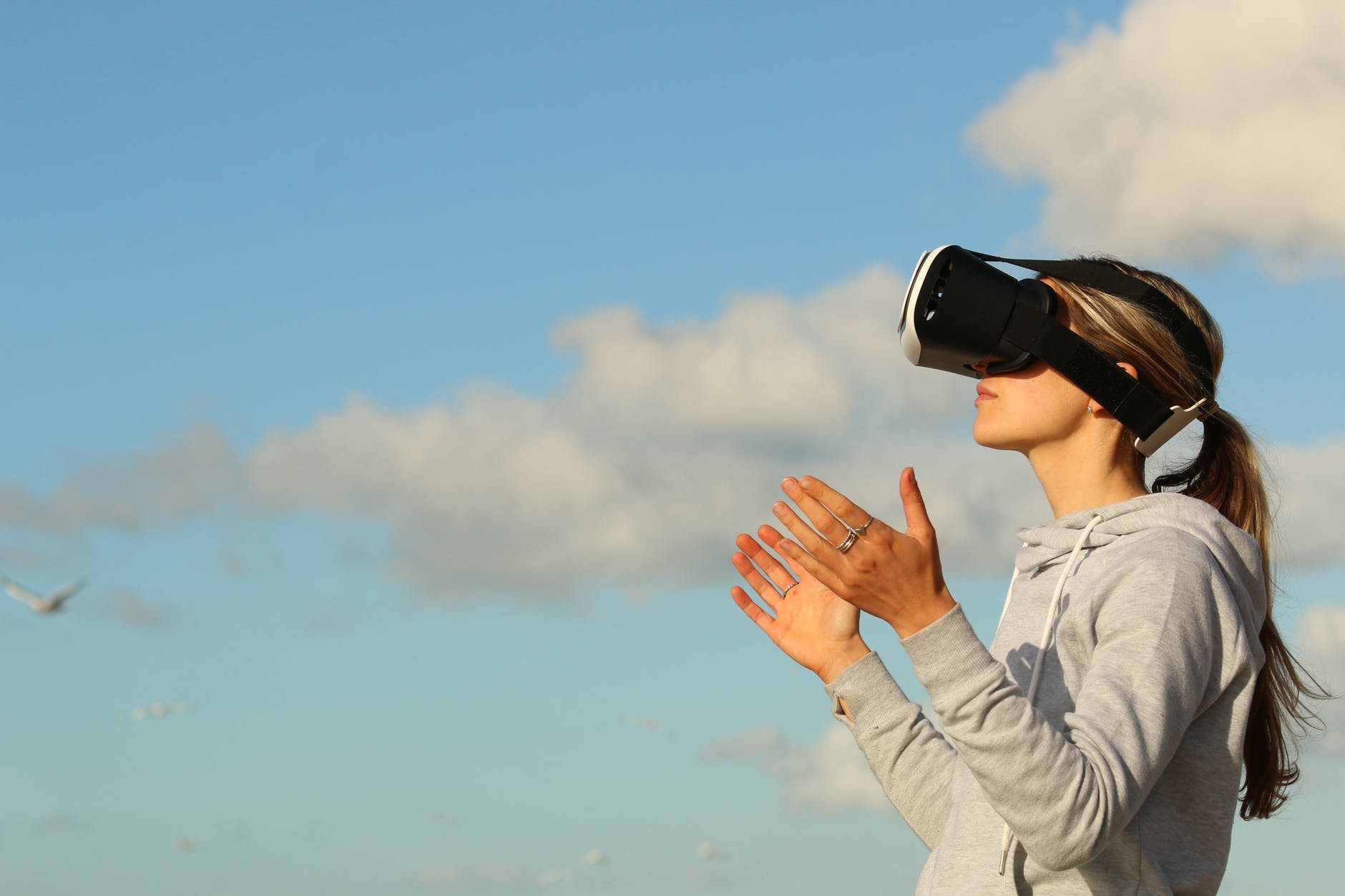The PAM has lofted a new program called VR to Go, where one rents a pre-programmed Oculus headset for a weekend. It sold out fast, I reserved a headset in November for this past weekend. The friend I shared the rental with drove us into town on Friday to pick it up, we watched it Friday and Saturday, and a third friend took it for the second half of the weekend and returned it on Monday.
The headset came in a case with the set, two hand controls (which weren’t actually needed beyond setup) and a charging cord. I took the swivel chair from my desk, set it in the middle of a room, put on the headset, defined the viewing space and was off and running.
The headset comes preloaded with 10 experiences, and I’m not sure how they’re selected, or, rather, “curated.” It did feel like there was a social justice agenda that was a bit heavy-handed — not that I don’t like social justice, but I prefer to choose my own adventures.
The one which I watched three times was Everest (USA 2019) – it took one, as the name indicates, to the top of Everest. I’ve dreamed of trekking to base camp, but this VR experience brought me to the tip top – where I would never otherwise go not only because of physical limitations, but also because of the litter, the conga lines, the needless risk. It was breathtaking, and reminded me of some of the ice climbing and ladder crevasse crossings I’d done on Rainier but at a much larger scale. I swiveled, and swiveled, and swiveled to take in the surrounding scenery, the waving prayer flags creating a protective border around the snow tents, the high seracs.
Other excellent ones in my opinion included Daughters of Chibok (Nigeria 2019), The Real Thing (France 2018), and Notes on Blindness: Into Darkness (France/U.K. 2016). Accused #2 and Gloomy Eyes were both innovative in how they expanded the medium, the perspective, really inhabited the dimensionalities. But to knock it out of the park, there also has to be a really compelling storyline and story telling, and my favorites included those. The Everest storyline was simple, but the visuals more than made up for it.
There are so many directions to go in terms of discussing these experiences. The colonialism, the gaze, the social good it does or doesn’t experience, who gets to tell which stories and how.
Aside from the pure grandeur of Everest, I was captivated by the self-reflexivity of The Real Thing and Notes on Blindness. The Real Thing shows off the duplitecture in China: replicas of the Eiffel Tower and surrounding buildings, The Tower of London, the canals of Venice, and how people actually buy real estate and live in these worlds which are replicas of world architecture, but with Chinese restaurants on the lowest levels. Nowadays, these constructions serve as a backdrop for wedding and other photo experiences. As the experience closed, one of the residents remarked that her city was “real to me, and not any less real than the original.” Though I still can’t go quite so far with the VR experience, it’s an interesting comment to hear in a virtual world of another duplicative world.
Notes on Blindness was a visual and auditory experience about losing sight, and created a virtual world of simultaneously dimming sight and increasing surround sound. One could have experienced it with one’s eyes closed, but there was still a surrounding visual experience to be had, it reminded me of being in the same sort of space where one is in a foreign country but doesn’t speak the language, or has only a hazy idea of the meanings of words. A swaddled experience of reality.
Would I do this again? Yes, for sure, but I would coordinate with even more friends. $50 is still a lot to drop on a 90-minute experience as an individual, though the headsets by themselves are super expensive, renting is a good way to go when one also considers that the film studios also need to take a cut.
